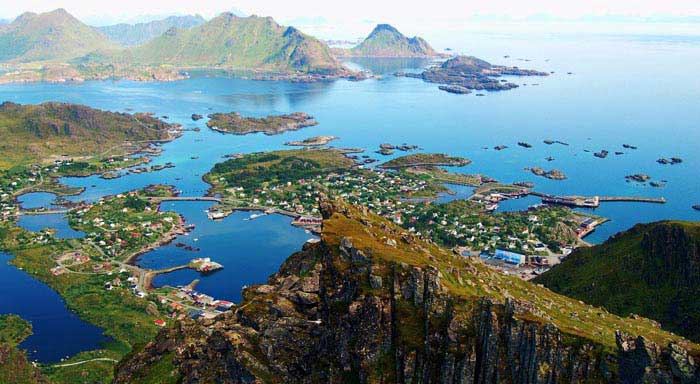The first look of the island appears to be a streak beyond the cluster of gray clouds. As the sky gets clearer with the whipping of wind, it reveals a slight spot of the galaxy and the satellite's minor arc. The streak begins to illuminate and erect, striking off the successions of anguishing rotations before falling to the earth's surface.
In the old times, the people of Lofoten considered these northern lights as the angry gods' visible form which is hopeful to expose the unconscious souls in the sky to forever roam across the darkness. Even nowadays, to prevent from the unknown danger, local people here have a superstition to not to whistle during dawn. The life of a fisherman is full of perils here.
The icy paths, the uninvited cyclones here make it really tough for fishermen. The fishermen used to wear woolen clothes in the nineteenth century,' says guide Rahner Palsson adding that if the fisherman falls overboard, there is no chance to come up rubbing his hands to keep warmth. Then he led the way to the Lofoten's oldest fishing town-Nusfjord now turned into a living museum.
The temptress that made fishermen risk their lives is the reason what Norway is today was the cod fish. The life of fishermen was very difficult. This nutritious fish was one of the biggest reasons that made the pirates travel farther and this fish was the preference in their voyage's stuff. Cod has been the biggest export material for centuries now.
Some hundred years ago, almost 90 percent of Norwegian income used to come from taxation on stockfish-says Hartvig Sverdrup, a fish factory owner in Reine, a town surrounded by mountains in the form of a horseshoe. Hartvig's ancestors established the factory precisely five generations ago and the trading is quite same till date.
The export of the Great crates of fish is done directly to the markets of Nigeria, to the British chip shops and restaurants in Italy. The guide says taking a bite from a dried fish by whacking it with an axe that most of the population loves to eat fresh fishes only. He adds that the pirates used to take stockfish with them instead of raping and killing often, the cod fish became their prime source of trading.
The Lofoten islands' people's interest in fish has gone beyond the thoughts of commerce for years now. Lofoten people are insane about the cod fish. The fisher department would travel 500 miles long from the Barents Sea to the south where meets the cluster of island's warm waters to spawn en masse. Their meat becomes leaner and the prices are high after that very lengthy quest. Olga Wiesniewska, a Polish Ph.D. student completing his studies of fisheries in the famous town of Å adds that Norwegians wait for the code to arrive whole year long. His all the fishermen friends are eagerly waiting for the fish and now they can't be seen anymore as they are always out fishing 24x7.
Even in the beginning of the season, the sea is paved with fishing boats and these boats staggering over the bouncy tides following the seagull's pathways in the quest to drag a magnificent green-grey fish. For commercial traders, the limit is 13 tons on a fine day of good luck but most Norwegians are satisfied with a line and one or two can be taken out with beer for a supper too. The crusher rewarded a kilogram of coffee by theLofotposten newspaper after Lofoten got its first ‘coffee cod' – the first 30kg catch of the year.

